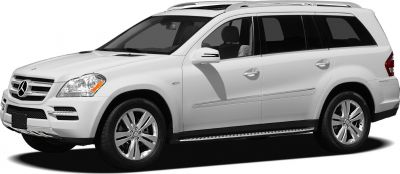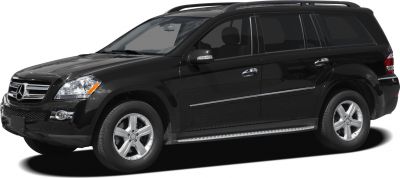 2002 Chevrolet Trailblazer I Dimensions, Size & Specs
2002 Chevrolet Trailblazer I Dimensions, Size & SpecsMeasurements of the 2002 Chevrolet Trailblazer I, engineered for optimal performance and comfort
| Dimensions | |
|---|---|
| Length: | 4872-5279 mm191.8-207.8 in16.0-17.3 ft |
| Width: | 1897 mm74.7 in6.2 ft |
| Height: | 1723-1957 mm67.8-77.0 in5.7-6.4 ft |
| Trunk Capacity: | 631-1238 liter22.3-43.7 cu ft |
| Trunk Capacity (Max): | 2268-3030 liter80.1-107.0 cu ft |
| Weight Specifications | |
| Curb Weight: | 2015-2360 kg4442-5203 lbs |
| Maximal permitted Weight: | 2494-2903 kg5498-6400 lbs |
| Tire Specifications | |
| Rims Size: |
|
| Tire Sizes: |
|
The Chevrolet Trailblazer I, produced from 2001 to 2009 and introduced as a 2002 model year, is a midsize SUV designed to offer a robust and spacious driving experience. Available in various configurations during its production run, the Trailblazer I is known for its commanding presence on the road combined with versatility. The SUV's overall length ranges from 4872 mm to 5279 mm (191.8 to 207.9 inches), while the width measures between 1894 mm and 1897 mm (74.5 to 74.7 inches), providing a broad stance that contributes to its stability and road grip. Height varies quite significantly from 1723 mm up to 1957 mm (67.8 to 77.0 inches), which reflects different trim levels and suspension setups, including possible variations in roof rails or optional equipment. The curb weight falls between 2015 kg and 2360 kg (4441 to 5205 lbs), depending on the variant and equipment, with a maximum weight capacity ranging from 2494 kg to 2903 kg (5499 to 6400 lbs), ensuring it can handle both passengers and cargo efficiently. Luggage capacity is another area where the Trailblazer excels, offering from 631 liters to 1238 liters (22.3 to 43.7 cubic feet) of cargo room with rear seats upright. When rear seats are folded down, the space significantly expands to between 2268 liters and 3030 liters (80.1 to 107.0 cubic feet), making it highly practical for transporting larger items. The vehicle rides on 16-inch rims paired with a variety of tire sizes including 245/70 R16 S, 255/60 R17, 245/65 R17, 255/50 R20, among others — each choice influencing ride comfort and handling characteristics. Overall, the Chevrolet Trailblazer I blends utility, ample interior space, and solid dimensions that make it a competitive option in the midsize SUV segment during its era.
Discover the standout features that make the 2002 Chevrolet Trailblazer I a leader in its class
Have a question? Please check our knowledgebase first.
The Chevrolet Trailblazer I, produced from 2001 to 2009, features a length range of 4872 mm to 5279 mm (approximately 191.8 inches to 207.9 inches). This variation is influenced by different model year tweaks, optional equipment, and configurations such as wheelbase length and bumper design. The longer measurements reflect versions with extended overhangs or added body cladding. This length positions it well within the mid-size SUV category, offering ample interior space while maintaining a road presence suited for both urban driving and off-road capability.
The Chevrolet Trailblazer I has a width ranging from 1894 mm to 1897 mm (about 74.5 to 74.6 inches). This width provides a stable stance on the road and balances interior shoulder room with maneuverability. The rim sizes are primarily 16 inches diameter, paired with various tire options including 245/70 R16 S, 255/60 R17, 245/65 R17, 255/50 R20, offering options for different driving preferences and trim variants. These tire and rim combinations influence ride comfort, handling, and off-road capability.
The Trailblazer I's height varies between 1723 mm and 1957 mm (approximately 67.8 inches to 77.0 inches). This range is mainly due to factors such as roof rack options, suspension setup, and trim packages. A higher height improves ground clearance crucial for off-road performance and snow driving, whereas a lower profile aids in aerodynamics and stable highway handling. The height enables the Trailblazer to balance interior headroom with the SUV's capability to navigate varied driving conditions.
The Chevrolet Trailblazer I has a curb weight ranging from 2015 kg to 2360 kg (4,443 lbs to 5,203 lbs). The maximum permissible weight ranges between 2494 kg and 2903 kg (5,498 lbs to 6,400 lbs). This reflects differences in trim levels, drivetrain configurations (such as 2WD or 4WD), and optional features. The robust weight supports a sturdy SUV structure with impressive towing capability and durability. The variation also impacts fuel economy, handling, and payload capacity.
The Chevrolet Trailblazer I provides between 631 liters and 1238 liters (approximately 22.3 to 43.7 cubic feet) of luggage capacity with all seats in use. When the rear seats are folded down, this expands dramatically to between 2268 liters and 3030 liters (about 80.1 to 107.0 cubic feet). This versatility makes the Trailblazer I ideal for hauling large cargo loads or equipment, which is useful for outdoor activities or family trips. Its cargo volume flexibility ranks high among mid-size SUVs of its era.
Standard single-car garages typically measure around 3 meters (about 10 feet) wide and 6 meters (20 feet) deep. Given the Trailblazer I’s width of approximately 1.89 meters (6.2 feet) and length ranging from 4.87 to 5.27 meters (around 16 to 17.3 feet), the vehicle will fit into a standard garage with some space to spare lengthwise. However, the fit can be somewhat tight width-wise, leaving limited room for opening doors widely or moving around the vehicle inside the garage. Careful parking is recommended, especially for garages with storage or shelving.
The Chevrolet Trailblazer I effectively replaced the Chevrolet Blazer and S-10 Blazer SUVs but increased substantially in overall size and capability. It is longer, wider, and heavier than its predecessors, offering improved passenger comfort, cargo capacity, and towing capabilities. The Trailblazer I embraced mid-size SUV trends with a more robust frame and extended wheelbase, providing modernized off-road and highway capabilities. The dimensional growth translated to better interior space and stability, reflecting a shift towards a larger, more versatile SUV format.
During its production years, the Chevrolet Trailblazer I competed with popular mid-size SUVs like the Ford Explorer, Jeep Grand Cherokee, and Toyota 4Runner. Its length of up to 5279 mm (207.9 inches) and wide stance provided it an edge in cargo and passenger volume compared to some rivals. Its luggage space, especially when rear seats are folded, was very competitive, making it adaptable for family and recreational use. The Trailblazer's robust curb weight and higher maximum weight also underscored its strong build, often favoring towing and off-road prowess.
The Trailblazer I commonly comes with 16-inch rims but offers tire sizes ranging from 245/70 R16 to 255/50 R20. Larger tires and rims, such as the 20-inch option, provide a more aggressive look and can enhance handling and stability on paved roads but may slightly reduce ride comfort. Smaller tire sizes tend to better absorb shock on rough terrain, enhancing off-road capability. Tire width and profile also affect traction and fuel efficiency. Thus, the available ranges allow tailoring the Trailblazer’s driving dynamics to owner preference and typical use.
The Trailblazer I’s height ranges from 1723 mm (67.8 inches) to 1957 mm (77.0 inches), impacting both aerodynamics and off-road utility. A taller height enhances ground clearance, improving off-road performance, obstacle negotiation, and water fording ability. Roof accessories or higher suspension trims increase this height further. However, taller vehicles encounter greater air resistance at highway speeds, slightly reducing fuel efficiency and increasing wind noise. Conversely, lower roof heights improve aerodynamic efficiency and highway handling but sacrifice some of the rugged SUV advantages.
Discover similar sized cars.

| Production: | 2009-2012 |
|---|---|
| Model Year: | 2009 |
| Length: | 5099 mm200.7 in |
| Width: | 1920 mm75.6 in |
| Height: | 1840 mm72.4 in |

| Production: | 2006-2009 |
|---|---|
| Model Year: | 2006 |
| Length: | 5088 mm200.3 in |
| Width: | 1920 mm75.6 in |
| Height: | 1840 mm72.4 in |
